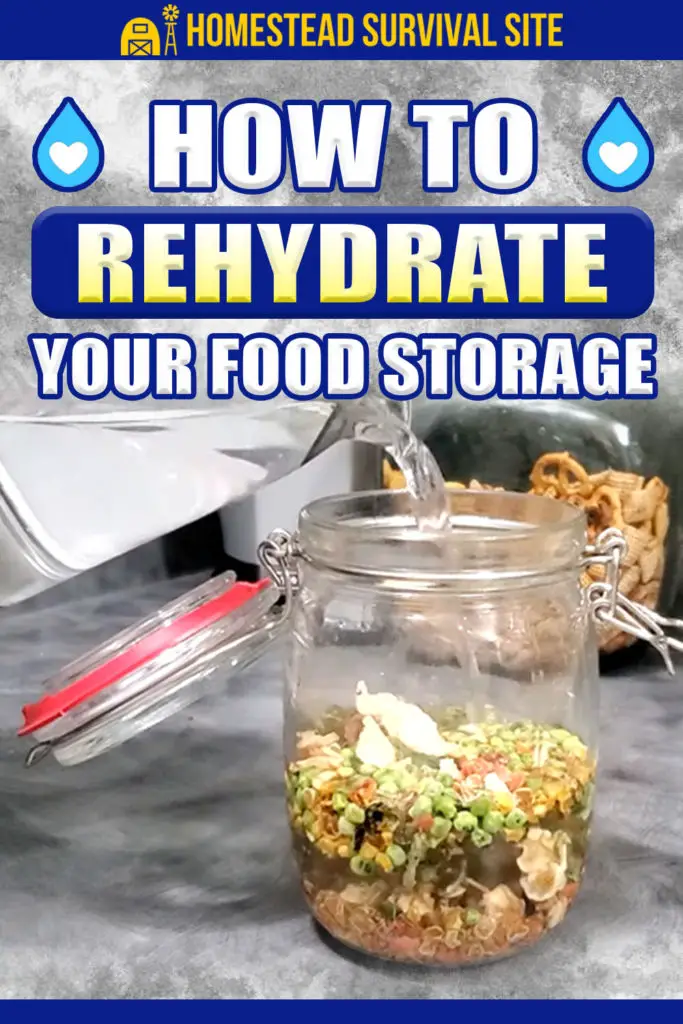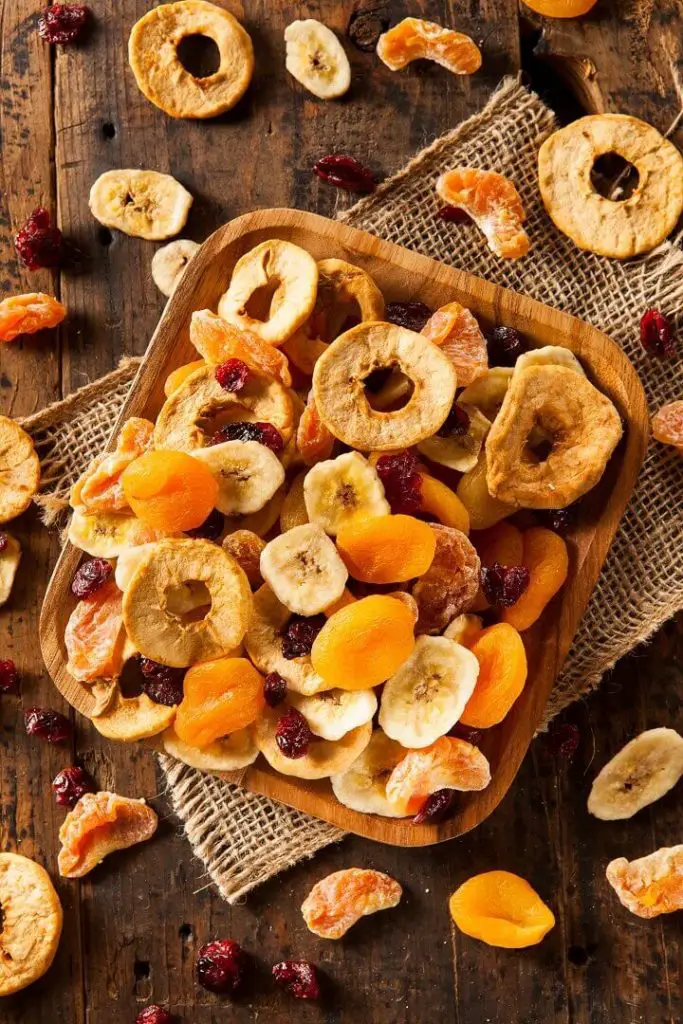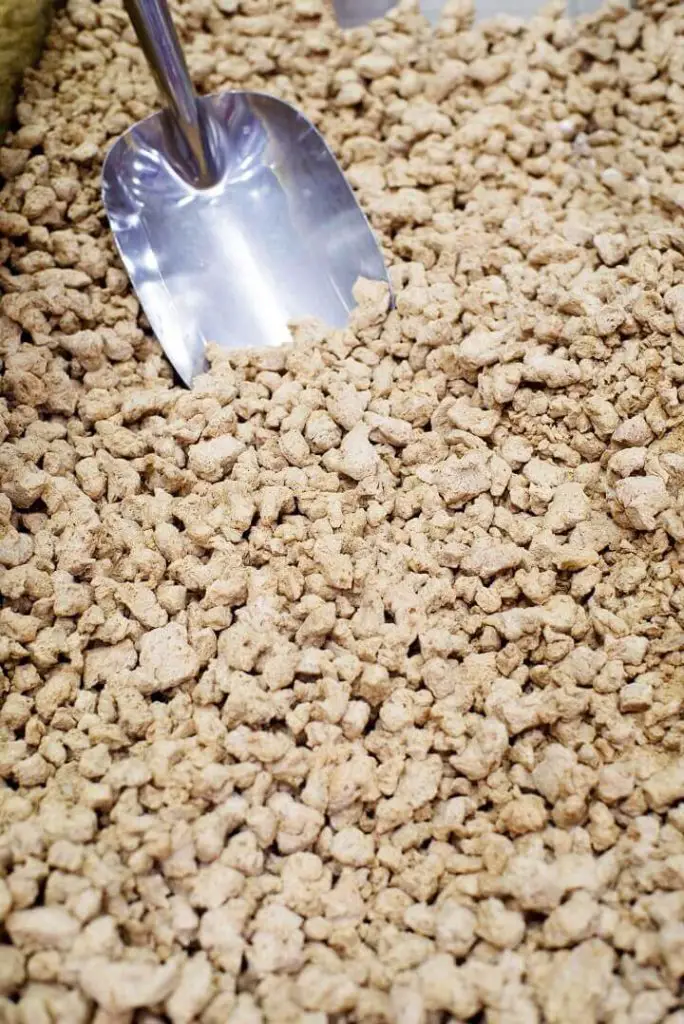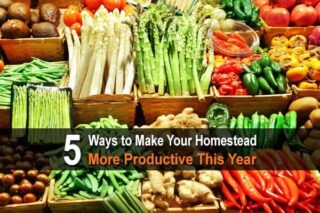Estimated reading time: 11 minutes

Dehydrated and freeze-dried foods are common in many food storage stockpiles. They both fall in the category of dried foods but have unique processes and properties.
Drying food as a preservative practice goes back 14,000 years when ancient oriental and Middle-Eastern cultures used the sun to preserve food for later use. It’s obviously a time-tested approach to food preservation. It was commonly used to preserve fruits and vegetables but other food including proteins like fish, wild game and domesticated animals were also dried for preservation.
Today, foods are dehydrated using food dehydrators that combine low heat levels with circulating air to dry everything from vegetables and fruits to meat and even cheese. The equipment is a little more complex than drying in the sun but the principle is the same.
In 1906, a Frenchman by the name of Jacques-Arsene d’Arsonval invented a freeze-drying process at the College de France in Paris. The process was used to freeze dry blood serum during World War II and has emerged as the best way to preserve heat-sensitive, biological foods—particularly proteins like meats and fish and dairy products like milk, butter and cheese.
The freeze-drying process involves freezing the food and then exposing it to a vacuum. This causes the ice to change directly from a solid to a vapor without passing through a liquid phase. The result is a preserved food that has an even longer shelf-life than dehydrated foods while retaining much of the original food’s shape, texture, and color.
Want to save this post for later? Click Here to Pin It On Pinterest!
Benefits of Food Dehydration and Freeze Drying
As a food preservative process, both dehydration and freeze-drying enable a long and food-safe shelf-life for a wide range of foods. In fact, most long-term food storage promising shelf-lives up to 30 years and more are either dehydrated or freeze dried.
Dried foods also are more compact so more food can be stored in any package and the resulting package is much lighter in terms of weight than traditional canned foods. Most of the weight in canned food is from the liquid surrounding the food.
Dehydration and freeze-drying removes the weight by eliminating the need for water or other liquids in the canning process while removing the water from the food itself.
Most Dried Foods Must Be Rehydrated Before Eating
Rehydrating freeze-dried and dehydrated foods is not always necessary but usually recommended. In actual fact, you can eat many dried foods right out of the package. This is particularly true with freeze-dried foods.
The only small caution is that you might want to drink something while you eat it dry. Otherwise you’re body will try to compensate for the lack of water in the food and you could end up being the only thing left dehydrated.
Another curious caution is to not overeat freeze-fried or dehydrated foods while still dry. As you drink water to stay hydrated, you’ll also be rehydrating the dry foods… in your stomach! Many dehydrated and freeze-dried foods expand when rehydrated and your stomach may not forgive you as the dried foods slowly expand 2 to 3 times the volume you consumed.
Rehydrating Dehydrated Foods
Here’s the telegram: Most dehydrated foods can be rehydrated in cold water using a 2:1 ratio of 2 parts water to 1 part dehydrated food. The rehydration time averages 20 minutes to 2 hours for most fruits and vegetables. There are exceptions and some alternatives, but a 2 to 1 ratio is the average.
Rehydrating Freeze-Dried Foods
The standard proportion for freeze-dried foods is 1:1 or 1 cup of water to 1 cup of freeze-dried food. The soaking times are also shorter than dehydrated foods and are measured in minutes rather than hours.
A General Guide to Dried Food Rehydration
Dried foods vary as well as how they are cut, sliced, diced or left whole. As a starting point, here are generally recommended amounts and times for rehydration in a chart. Dehydrated foods are highlighted in orange and freeze-dried foods are highlighted in blue.
| Dried Food (dehydrated or freeze-dried) | Dry Portion (all @ 1-cup) | Amount of Liquid Added in Cups | Cold Soaking Time (minimum) | Total Yield After Rehydration |
|---|---|---|---|---|
| FRUITS | ||||
| Apples sliced | 1 cup | 1 ½ cups | ½ hour | 1 cup |
| Apples diced | 1 cup | 1 cup | 1 ¼ hours | 1 cup |
| Apricot diced | 1 cup | 1 cup | 1 ½ hours | 1 cup |
| Banana sliced | 1 cup | 1 cup | ½ hour | 1 cup |
| Blackberries whole | 1 cup | 1 cup | 2 hours | 1 cup |
| Blueberries whole | 1 cup | 1 cup | 2 hours | 1 cup |
| Cherries whole | 1 cup | 1 cup | 2 hours | 1 cup |
| Mango diced | 1 cup | 1 cup | 1 ½ hours | 1 cup |
| Pear sliced | 1 cup | 1 ¾ cups | 1 ¼ hours | 1 cup |
| Peaches sliced | 1 cup | 1 ¾ cups | 1 ¼ hours | 1 cup |
| Pineapple chunks | 1 cup | 1 cup | 2 hours | 1 cup |
| Strawberries whole | 1 cup | 1 cup | 1 hour | 1 cup |
| VEGETABLES | ||||
| Asparagus chopped | 1 cup | 2 ¼ cups | 1 ½ hours | 3 cups |
| Beets sliced | 1 cup | 2 ¾ cups | 1 ½ hours | 4 cups |
| Lima beans | 1 cup | 2 ½ cups | 1 ½ hours | 3 cups |
| Broccoli flowerets | 1 cup | 1 cup | 15 minutes | 3 ¼ cups |
| Cabbage shredded | 1 cup | 1 cup | 5 minutes | 3 ½ cups |
| Carrots sliced | 1 cup | 2 ¼ cups | 1 hour | 4 cups |
| Celery chopped | 1 cup | 1 cup | 1 hour | 3 ½ cups |
| Chives chopped | ¼ cup | 1 cup | 10 minutes | ½ cup |
| Corn kernels | 1 cup | 1 cup | 5 minutes | 1 cup |
| Garlic diced | ¼ cup | 1 cup | 10 minutes | ½ cup |
| Green beans chopped | 1 cup | 1 cup | 15 minutes | 3 cups |
| Jalapeno diced | ¼ cup | 1 cup | 5 minutes | ½ cup |
| Leeks sliced | ½ cup | 1 cup | 5 minutes | 1 cup |
| Mushroom buttons | 1 cup | 2 cups | 1 hour | 1 cup |
| Shitake mushrooms whole | 1 cup | 2 cups | 15 minutes | 1 cup |
| Okra chopped | ½ cup | 1 cup | ½ hour | 1 cup |
| Onions diced | ¼ cup | ½ cup | 10 minutes | ½ cup |
| Peas | 1 cup | 2 ½ cps | 20 minutes | 3 cups |
| Sweet peppers diced | ½ cup | 1 ½ cups | 5 minutes | 1 cup |
| Potatoes sliced | 1 cup | 2 cups | 1 hour | 2 cups |
| Spinach flakes | ½ cup | ¾ cup | 1 minute | 1 cup |
| Tomato diced | 1 cup | 2 cups | 5 minutes | 1 ¼ cups |
| Zucchini sliced | 1 cup | 2 cups | 10 minutes | 1 ½ cups |
| DRY LEGUMES | ||||
| Lentils | 1 cup | 2 cups | 2 hours | 2 cups |
| Red beans | 1 cup | 3 cups | 3 hours | 2 cups |
| Black beans | 1 cup | 3 cups | 3 hours | 2 cups |
| Navy beans | 1 cup | 3 cups | 3 hours | 2 cups |
| Great Northern Beans | 1 cup | 3 cups | 3 hours | 2 cups |
| Dark Kidney beans | 1 cup | 3 cups | 4 hours | 2 cups |
| Garbanzo beans | 1 cup | 3 cups | 4 hours | 2 cups |
| Pinto beans | 1 cup | 3 cups | 3 hours | 2 cups |
| Split peas | 1 cup | 2 cups | 2 hours | 2 cups |
| TVP | ||||
| Plain TVP bits | 1 cup | 1 cup | 2 hours | 2 ¼ cups |
| Taco bits | 1 cup | 1 cup | 2 hours | 2 ¼ cups |
| Beef bits | 1 cup | 1 cup | 2 hours | 3 cups |
| Beef chunks | 1 cup | 1 ½ cups | 6 hours refrigerated | 1 ½ cups |
| Ham bits | 1 cup | 1 cup | 2 hours | 2 cups |
| Chicken bits | 1 cup | 1 cup | 2 hours | 2 ½ cups |
| Chicken chunks | 1 cup | 1 ½ cups | 6 hours refrigerated | 1 ½ cups |

What’s surprising to see is how the total yield varies when many dried foods are rehydrated. Some deliver the same proportion cup for cup while others expand delivering up to a 3 cup yield when 1 cup is rehydrated. That’s important when using dried foods in recipes. Always look at the yield to determine how much to add to any recipe.
It’s also apparent that freeze-dried foods are more forgiving when it comes to rehydration. The vacuum process used in freeze drying creates a cellular texture that rehydrates quickly and evenly. Meats can still be a challenge but freeze-drying is the best process for drying meats and freeze-dried meats will usually rehydrate better than foods dehydrated by heat and air.
Making matters simpler is that freeze-dried fruits and vegetables rehydrate almost immediately. Meats can take longer but here again, taste as you go until the texture and the taste seem right.
The Dehydrated Meats Challenge
It’s possible you may have to extend the soaking time for some dried meats, especially meats that are dehydrated rather than freeze-dried.
Regardless of the drying process, meat in bits have the size of textured vegetable protein or TVP and rehydrate more easily, while meat in chunks can take longer depending on the size of the chunk, the cut of meat and the type of drying process. Typically, chicken rehydrates faster than beef or ham and freeze-dried meats rehydrate faster than dehydrated meats.
Adding Dehydrated Food Directly to a Recipe
This can be done with many dried foods especially vegetables and fruits. Freeze dried foods are best but dehydrated foods work just as well as long as the cooking time is long enough to fully rehydrate a dehydrated portion.
One caution is to allow for the water indicated in the chart when adding to a recipe. If you just dump some dehydrated peas into a recipe you may end up with a very dry result as the peas absorb their share of water or broth. Refer back to the chart and add additional liquid indicated in addition to the other liquid amounts for recipe ingredients.
It’s Not Just About Water
Stocks, broths, fruit juices, milk, any liquid you would use for cooking that’s appropriate to or complements the dried foods can be used for rehydration instead of water.
This is particularly true when adding dehydrated foods to a recipe that call for a broth or stock. Just remember to add an additional amount of the broth or stock to compensate for the rehydration.
And Then There’s TVP
Textured Vegetable Protein or TVP was developed in the 1960’s by Archer Daniels Midland. It is typically presented as a meat substitute made from soy beans although other raw ingredients have been used from other beans to grains. Given the protein density of soy the basic product delivers similar amounts of protein you would get from most meats. The typical comparison is to the protein profile of ground beef.

Over time, various meat flavorings were added to TVP to deliver a range of flavors similar to popular meats like beef, chicken, ham and even a taco flavored beef variety that has proven quite popular.
The standard proportions for rehydrating TVP are 2:1 or 2 cups of water to 1 cup of TVP across all flavors. TVP can also be added directly to a recipe but here again, remember the proportions for basic rehydration and add an additional 2:1 ratio of water in addition to the liquids indicated in the original recipe.
Unlike freeze-dried fruits, vegetables and meats, TVP can require a long soaking time for rehydration.
Rehydration Tips, Tricks and Fails
Warm water can be used to accelerate the rehydration process but anything rehydrated with warm water should be quickly cooked or consumed.
Boiling water is another way to accelerate rehydration and is most commonly used as part of the cooking process based on a recipe.
Dehydrated onions and warm water don’t mix. The result will be bright red onions and no, it’s not because they’re red onions. Only rehydrate onions in cold water first. That will retain the onion color.
When rehydrating over long periods beyond an hour you might want to think about rehydrating in the refrigerator or at least in a cool place.
You can eat dried foods dry especially freeze-dried food. They actually make a great snack.
Remember to experiment and take notes while you learn more about rehydrating dried foods. If you have a large stockpile of dried foods you might want to practice and follow the prepper’s mantra of “eat what you store and store what you eat.” It will help you to rotate your stocks and get you some good experience if you ever have to rely only on your dried foods for meals in the future.
Treat leftovers like you would treat any other food. Drying prevents bacterial growth and once rehydrated it is subject to the same microbes and contaminants as fresh foods.
It’s Really Not That Hard
Rehydrating dried foods is a simple step in most instances. As you continue to cook and eat dehydrated and freeze-dried foods the rehydration process will become simpler and you’ll see it as just another cooking step in any recipe. Just remember to taste as you go, take some notes and in no time you’ll master the craft of cooking with dried foods.
Like this post? Don't Forget to Pin It On Pinterest!









